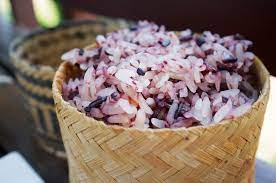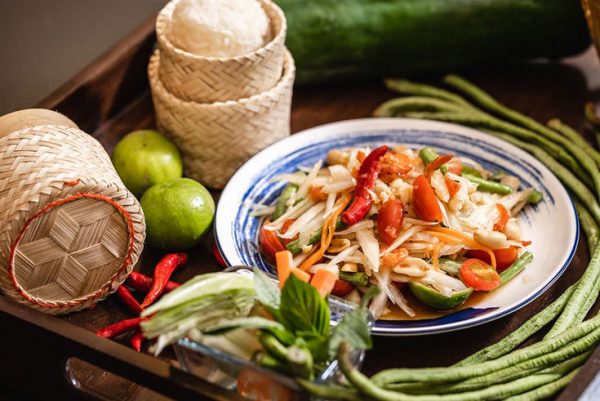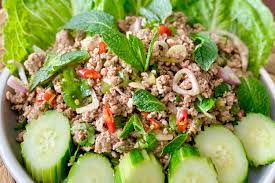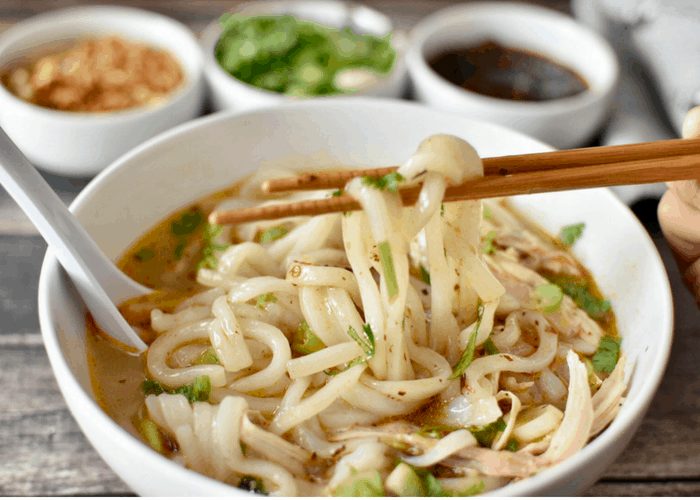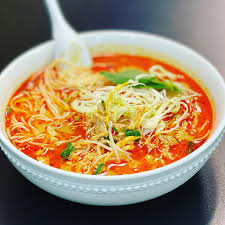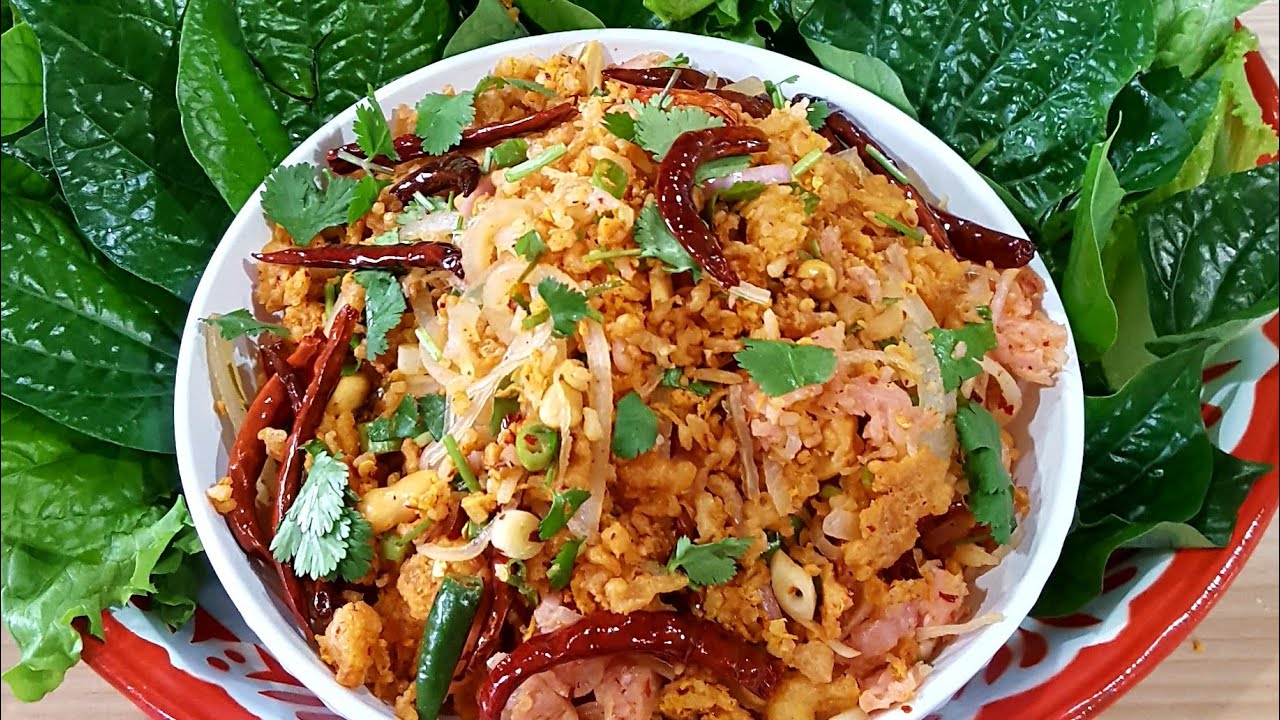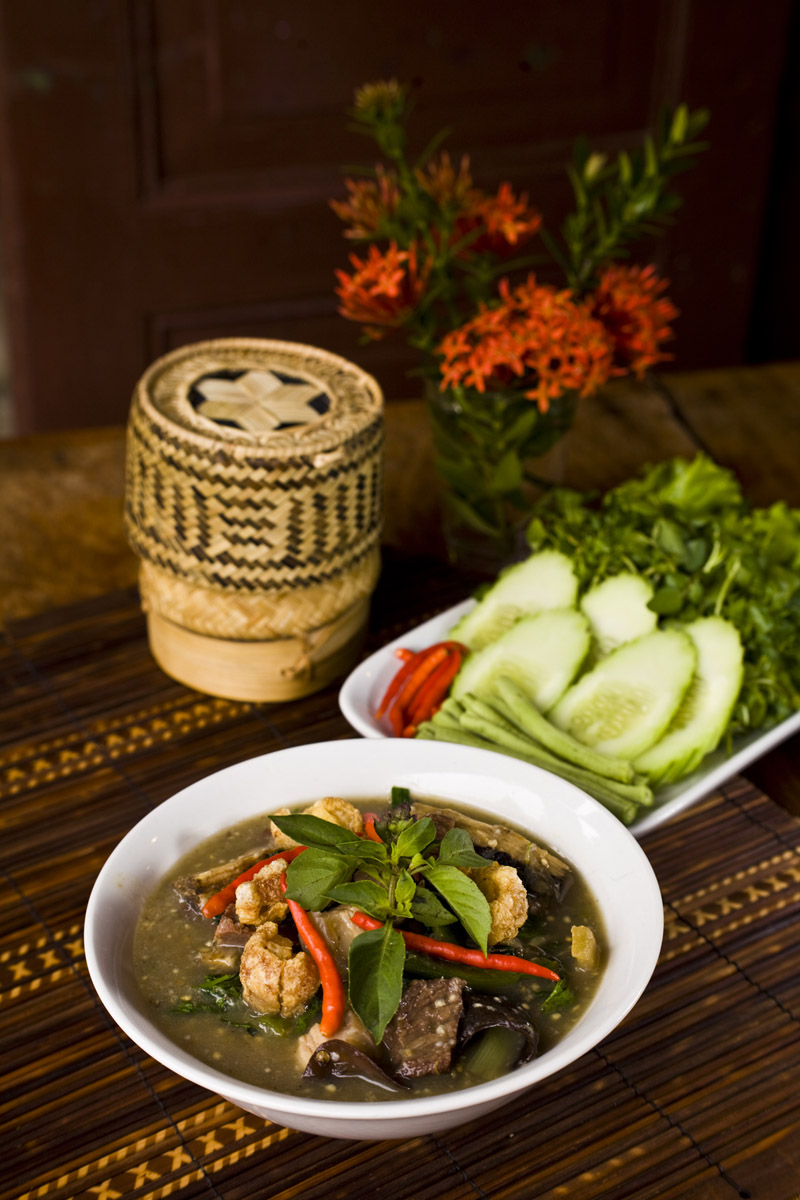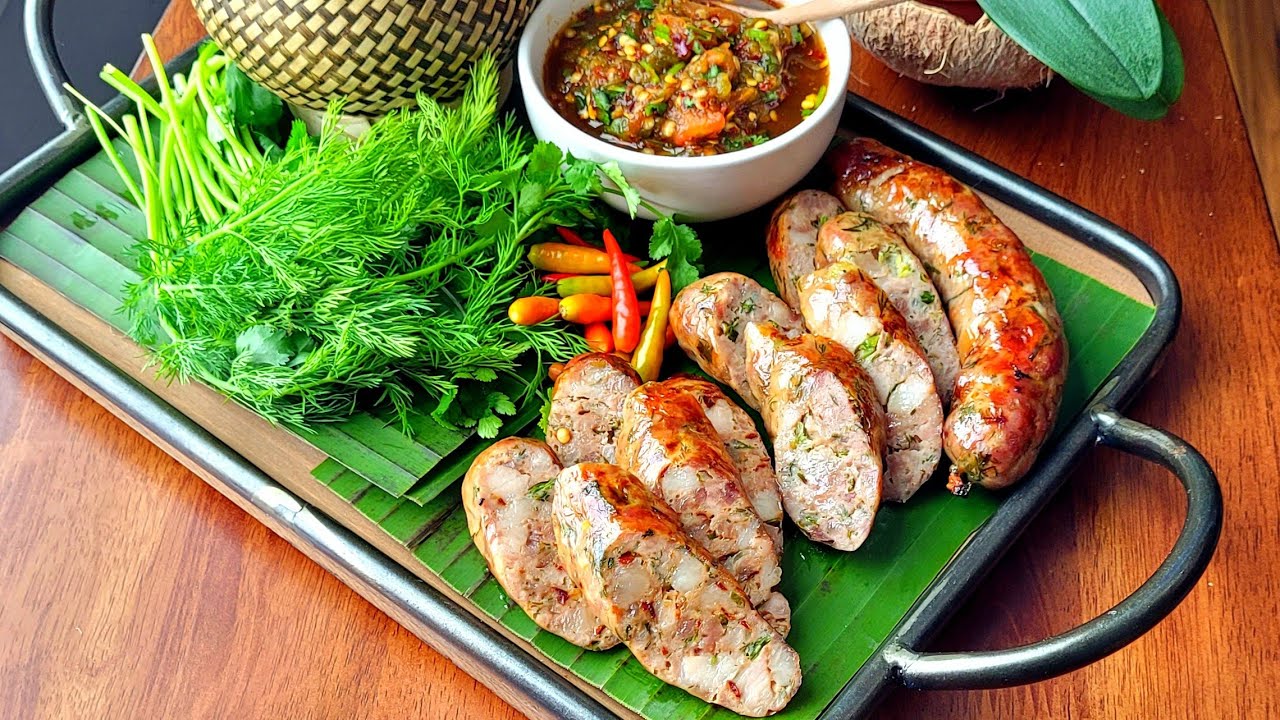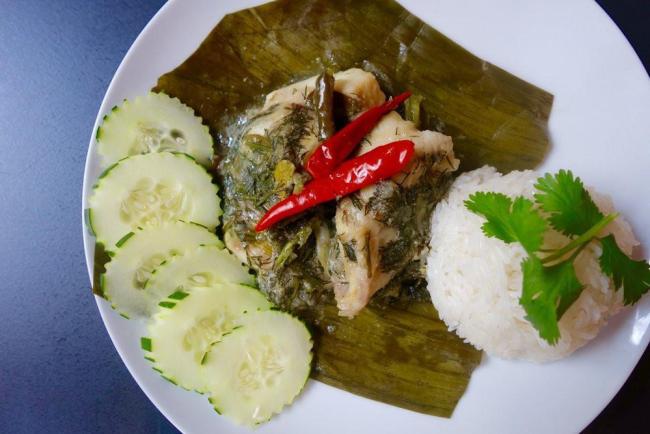We have compiled a list below of the most famous Lao dishes to try when traveling through the country. If you are adventurous, we recommend exploring local markets for a truly unique culinary experience!
Khao niaw (sticky rice)
A staple traditional food among the Laotians is khao niaw or glutinous sticky rice, which is traditionally served in a woven bamboo basket before being deftly rolled into a neat, small ball and eaten with the hand. This is generally accompanied by a selection of dips, parboiled vegetables, salads, soups and various curried meat or fish dishes. The bamboo basket is called a tip khao.
Eating in Laos is a communal activity, where dishes are shared by all at the table, and it’s considered bad luck not to replace the lid on top of the tip khao at the end of the meal. When Laotians go off to work in the fields or elsewhere you will often see these small woven baskets hanging at their sides and filled with supplies of sticky rice and perhaps small amounts of fish or meat, which will serve as their midday meal. Khao niaw is so deeply embedded in the Lao culture that the people sometimes refer to themselves as the children or descendants of sticky rice.
Tam som (Green papaya salad)
Tam som is a spicy green papaya salad, mixed with garlic, tomatoes, ground peanuts, crab, and fish sauce. The crunchy greens, chili and lime sauce, and crisp toppings make it a must-try. The varieties are plentiful and can include various additions. The sauce can also appear in many other combinations, and can significantly vary in sweetness and spiciness. Restaurants and street stalls will allow you to choose the variety you prefer and will adjust the ingredients in accordance with your preference.
Larb (Minced meat salad)
Another standby is larb, translated on most menus simply as a meat salad, and also commonly spelled in English as laap or lab. This is one of the ultimate staple Laos foods, and refers to any meat prepared immediately after butchering. Always fresh, often eaten raw, this dish is a mainstay in the Laos local diet. You can choose from any meat that the restaurant has available, but certain individual restaurants may specialize in pork laap, for example, or fish larb and often include the innards.
The chef will mince and then quickly fry − or keep raw if you order the raw version − the meat while adding fish sauce, a garden full of fresh herbs, including Laos mint, cilantro, garlic, chili, and green onions, lime juice, and toasted sticky rice powder, which is the ingredient that gives larb its signature flavor. All ingredients are mixed until everything is perfectly even. Local versions of Laos larb can also include bile, yes, digestive fluid, adding a unique bitterness to your plate.
Khao Piak Sen (Rice noodles)
A great first meal of any full-day Laos food tour, this simple and satisfying bowl of rice noodles can be found on nearly every street corner in Laos. Hours in the making, it begins with a massively deep flavorful meat-stock. The chef is usually up long before dawn, creating a gigantic drum full of soup and wheeling it to the front door of a restaurant −look out for a line of people alongside a stainless-steel container.
Khao Piak Sen is unique among rice noodle dishes in that it is always made using thick, hand rolled noodles, which are blanched in the soup stock and therefore retain their starch, giving the soup an almost gravy like thickness – rather than a typical watery soup. At the table setting, you will usually find a small dish of fresh herbs, hot red peppers fried in oil, shrimp paste, and often some dried crushed peanuts as well.
Khao poun (Rice vermicelli)
Then there is rice vermicelli, or khao poun. This is served cold with a variety of raw chopped vegetables, on top of which is placed a coconut-milk sauce flavored with meat and chilies. This is considered an auspicious dish at weddings and other celebrations, and is usually a favorite with foreigners.
Nam Khao Tod (Crispy rice salad)
Nam Khao Tod is a fresh salad made with deep-fried rice balls, chunks of soured pork sausage, peanuts, grated coconut, fish sauce, dried chili peppers, and other ingredients. It is traditionally eaten as a wrap by filling the individual lettuce leaves with the nam khao mixture, topped with fresh herbs and dried chilis.
Lam (Meat stew)
Lam is a popular regional dish from Luang Prabang. A mildly spicy, slightly tongue numbing, stew usually slow-cooked with lemongrass, dried buffalo meat and skin, game meat, quail or chicken, eggplants, wood ear mushrooms, and yard-long beans, served with paa daek and eaten with crisp-fried pork skin and sweet basil.
Sai Oua (Lao sausage)
These herbaceous and slightly spicy Lao pork sausages are the perfect balance of firm, springy and juicy, complete with a smoky aroma. Using a mixture of pork belly, skin, and minced meat, ingredients can also include diced galangal, chopped green onions, lemongrass, kaffir lime leaves, cilantro and dill, with fresh chili peppers.
Mok Pa (Fish in a banana leaf wrap)
Mok Pa is steamed fish that is typically wrapped up in banana leaves, or taro leaves, and tied with bamboo string. It is prepared with lemongrass, kaffir leaves, green onions, fish sauce, green chilis, shrimp paste, and fresh dill. All these ingredients are mixed together with steamed fish. Mok Pa should never be served dry, and must be paired with sticky rice.
In Laos, food is the most important activity of the day, and it is quite common for people to greet each other by immediately asking, “Have you eaten food?” Additionally, Lao people take great passion in sharing traditional dishes with curious travelers. Enjoy!
